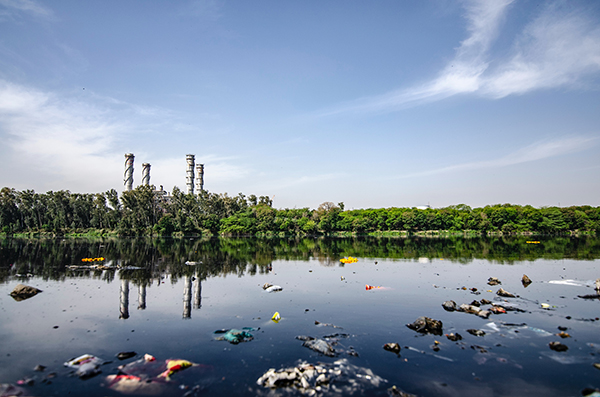Covid in wastewater

Sewage and wastewater help in the fight against COVID-19
The World Health Organization declared SARS-CoV-2, known as COVID-19, a worldwide pandemic in March 2020. The world health organization has since reported 35.3 million cases and over 1 million deaths. Despite widespread efforts to social distance, wear masks, and reduce travel, infection rates keep climbing. Infectious disease researchers and public health officials are using new tools to get ahead of this deadly virus.
Aggressive community testing is the primary way for local and federal governments to obtain data on the spread of COVID-19. However, COVID-19 infections are unpredictable and testing limitations including individual costs, invasiveness, and reaching enough people pose challenges for surveilling community spread by testing alone. Recent research has discovered COVID-19 traces in sewage and wastewater, opening up a whole new avenue of testing strategies that may increase the ability to predict a coming outbreak.
> Why is COVID-19 in sewage?
Wastewater includes sewage that collects from toilets, showers, sinks, rain, and industrial water use. The key to wastewater surveillance as a tool against COVID-19 is human fecal waste, a common source of virus detection. Viral RNA, the material that makes up the genetic code for COVID-19, can travel through the body to feces and subsequently into sewage within 3 days of infection. Even asymptomatic carriers of COVID-19, people who don’t show symptoms, can expel detectable levels of viral RNA in feces (1, 2, 3). Researchers in New Haven, CT observed increased viral numbers in sewage about a week before case counts in the city started increasing (2). So far, traces of COVID-19 have been detected in wastewater from the Netherlands, Sweden, Italy, Spain, and the United States (3).There is currently no evidence that COVID-19 can be contracted from contact with treated or untreated wastewater (1).
Wastewater surveillance as a public health tool
The National Wastewater Surveillance System (NWSS) is a collaboration by federal agencies and local health departments to track the spread of COVID-19. However, this is not the first time wastewater has been used to combat infectious diseases. Norovirus, antibiotic resistant bacteria, poliovirus, and measles have all been monitored through wastewater testing (1, 3). To test wastewater for COVID-19, a sample of wastewater is siphoned off and sent to a lab for RNA testing. Sensors can determine the amount of viral RNA relative to the total volume of the sample, which gives quantitative data about infection rates in the group of people represented by the wastewater sample (2). For example, a sample from a raw sewage pipe in close proximity to a university campus may give the surrounding community more time to prepare before community spread takes off. Some advantages include large-scale testing, since 80% of households in the United States use municipal sewers. However, monitoring can also be targeted to smaller pools of people depending on where the wastewater sample is taken. This method can also give early warning and includes asymptomatic individuals. It is more inclusive of communities with limited access to traditional testing and can help reduce the burden on healthcare professionals to carry out all of the COVID-19 testing. Finally, wastewater surveillance provides a large amount of data that can be analyzed over time to show how infection rates fluctuate in a community (1). This kind of method should only be used to supplement traditional testing, and there are some disadvantages. For example, wastewater testing does not account for households on septic-based systems or buildings with decentralized sewer systems. And there are still aspects of fecal shedding, COVID-19 infections, and RNA detection limits that are not fully understood (1).
How can my community get engaged in NWSS?
Wastewater surveillance for COVID-19 has the potential to improve both health and economic outcomes for communities that continue to be impacted by COVID-19. Early detection of viral RNA may reduce the damage caused by a large-scale outbreak. To get involved with the NWSS, communities should assemble the necessary partners for sample collection, laboratory analysis, and policymaking. An effective COVID-19 warning system coupled with adaptable health policy, such as safeguarding nursing homes, limiting gatherings, and stocking medical supplies, can work to save lives.
How can my community get engaged in NWSS?
- Wastewater Surveillance: A new public health tool to understand COVID-19 spread in a community. Centers for Disease Control and Prevention. Aug 17, 2020. Retrieved from https://www.cdc.gov/coronavirus/2019-ncov/cases-updates/wastewater-surveillance.html
- Wetsman N. Sewer Systems can be used as COVID-19 early warning signs. The Verge. Aug 27, 2020. Retrieved from https://www.theverge.com/21283825/sewer-systems-coronavirus-seawge-data-warning-signs-cities
- Mallapaty S. How sewage could reveal true scale of coronavirus outbreak. Nature. April 3, 2020. Retrieved from https://www.nature.com/articles/d41586-020-00973-x
- Most Viewed Blog Articles (5)
- Company News (285)
- Emerging Technologies (64)
- Microbiology and Life Science News (93)
- Water and Fluid Separation News (97)
- Filtration Resources (93)
- Product News (19)


![Join Sterlitech at BIO 2024 [Booth #5558]: Exploring the Future of Biotechnology](https://www.sterlitech.com/media/blog/cache/300x200/magefan_blog/b4.jpeg)



